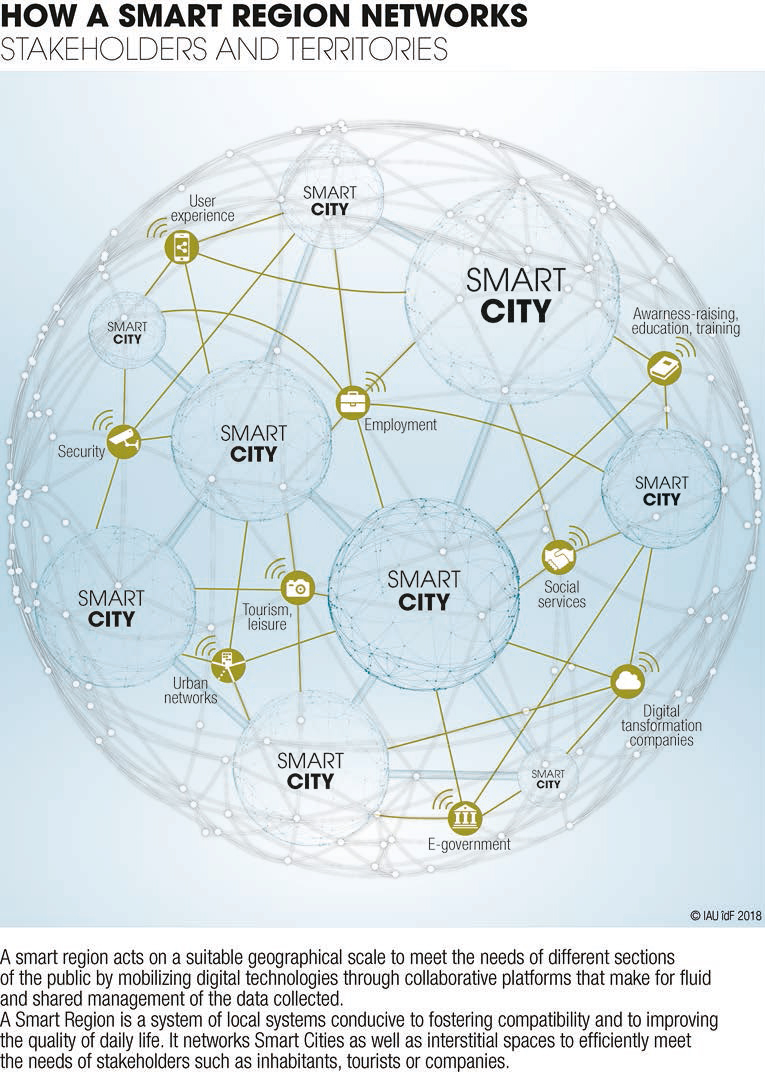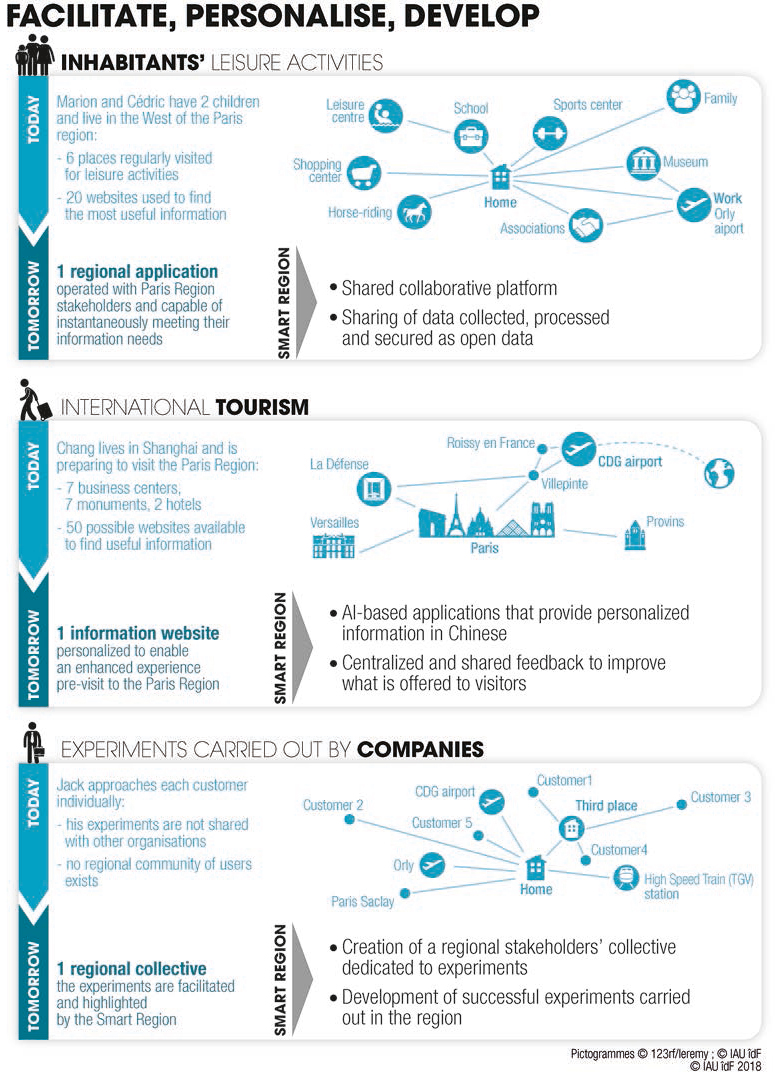The essential transformation of territories
Digital transformation has been a major source of progress and economic growth. However, the scale of the initiatives taken has often remained too restricted to meet all the needs or to optimize investments. It is within this context that the ‘Smart Region’ approaches were initiated, which have driven the Smart Cities and accelerated the improved competitiveness and quality of life of their territories.
Smart Region approaches are based on concepts and practices developed in the corporate world to match the increasing complexity of company business lines and provide efficient services to customers who are more and more mobile and connected. When applied to regional areas, these approaches first focused on economic development and innovation before broadening their focus to cover all topics relating to territorial management, namely: public services, planning, mobility, tourism and leisure, etc. Setting up a smart region requires four key components.
The four pillars of success
First, success depends on a proactive determination to support the sustainable transformation of the economy and of society. This calls for reconciling the achievement of objectives as diverse as economic competitiveness, social well-being and the ecological transition. Such an approach must go hand-in-hand with the introduction of a project management style that intelligently involves all the stakeholders concerned on a regional scale. Second, choosing a relevant geographical scale - a living area - that includes the areas around several Smart Cities and interstitial spaces is the key to connecting up and intensifying local initiatives. The third pillar is giving priority attention to meeting the needs of various sections of the public - namely inhabitants, professionals, visitors, academics, etc. - in terms of how they use the territory concerned. A Smart Region should go beyond silo-based offerings and provide solutions that best meet the needs for mobility, starting up new businesses and discovering regional tourist attractions. This alignment of resources and tools also ensures that investment and operating expenditures are optimized.
To build the fourth and last pillar, a smart region mobilizes a set of digital technologies. Setting up a regional system made up of local systems makes it possible to create effective collaborative platforms that bring together local and regional stakeholders within a neutral framework. These platforms also provide a range of benefits: shared management of data and skills; optimization of expenditures; sharing and dissemination of experiences; possible exchanges of views on planned projects. These benefits, in turn, enable partners to draw up joint actions or facilitate the conception and implementation of public/private policies and initiatives. A good illustration of this approach is provided by the reorganization of public transport in the Paris Region. The quality of the offering of transport and related services to travelers has been enhanced by the setting up of a regional agency called Île-de-France Mobilités1, which brings together all the stakeholders (travelers, elected officials, builders, carriers, infrastructure managers, etc.). Even better, this has made it possible to deploy the future Smart Vianavigo application. Thanks to its broader package of e-services, this will provide travelers with an even better offering.
Five priorities and eight key topics
A smart region’s objectives can be summarized under five priorities: to deploy policies designed to meet the needs of the public; to enhance the effectiveness of public policies thanks to digitalization and collective efficiency; to support the deployment of economic experiments and ecosystems at the heart of the digital transformation; to amplify the impacts of projects involving private, public and non-profit stakeholders; and to enhance regional competitiveness and hospitality. Developing a smart region also means identifying thematic areas of intervention, such as: user experience, security, employment, tourism and leisure, urban networks, awareness-raising, educating and training inhabitants, social services, digital transformation companies and bodies, and finally e-government.
Data at the service of governance in Wallonia
Wallonia exemplifies a policy in favor of the development of digital transformation businesses and bodies. Through the “Digital Wallonia” agency, a collaborative platform has been established with four major functions: to map the stakeholder ecosystem; to propose a shared calendar of digital-related events; to share the components of the regional digital strategy; and to propose substantive content and news items on digitalization. This collective platform forms part of a collaborative system of governance involving regional stakeholders and is based on a “data-driven and services-oriented” approach.
Vincent Gollain, Head of the Economics Department, L'Institut Paris Region
1. Former Syndicat des Transports d’Île-de-France (Stif).
This page is linked to the following category :
Economy


